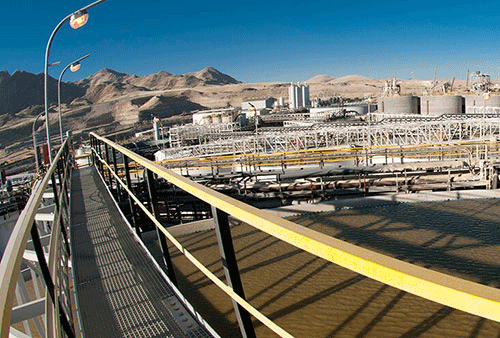The Langer Heinrich Uranium mine, which is still under care and maintenance and belongs to Paladin Energy Ltd in the Erongo region, is expected to resume production by March 2024.
Langer Heinrich Uranium general manager Johan Roux made the remarks recently.
The decline in uranium market conditions led Paladin to place Langer Heinrich on care and maintenance in 2018.
In a quarterly activity report from the Australian Securities Exchange (ASE) for March 2021, Paladin Energy CEO Ian Purdy said the extensive work packages that Paladin and consultants are undertaking will ensure that when the right uranium pricing market prevails, the Langer Heinrich mine can be successfully restarted.
According to the CEO, the restart plan confirms that the globally significant mine is positively placed to take advantage in an improved uranium market.
Touching on the restart plan for the Langer Heinrich mine, Roux stated that advancing critical-path elements of the mine restart include the ongoing optimisation of tailings management, stockpiling and run of mine blending strategies, completion of the grade control dilution study, as well as validating dilution assumptions in the mineral resources model.
According to him, upon resumption of mining activities, water utilisation within the mine remains a key input. Thus, the mine signed a letter of commitment with NamWater, which commits the mine to be supplied with desalination water in bulk by NamWater.
Secondly, the two signed a repayment agreement for the pro rata share of the capital cost of the Wlotzkasbaken to Swakopmund pipeline, which confirms capacity allocated to Langer Heinrich on this national asset, which was built on the back of increased mining demand and supplying water into the integrated bulk water supply system.
At the signing, NamWater CEO Abraham Nehemia said the mine was originally supplied from groundwater sources before being moved to desalination because of the lack of water available from groundwater sources.
To supply water to the uranium mines in the Erongo region, NamWater and the government invested in a new 34km pipeline between Wlotzkasbaken and Swakopmund at a total cost of N$454 million, replacing the old pipeline from the Omdel Aquifer to Swakopmund.
“The mines are expected to make a capital contribution for their capacity on the pipeline, and there the two entities agreed to sign a repayment agreement. In terms of our supply model, the mines make a capital contribution to reserve capacity on a pipeline which remains a national asset supplying all customers,” explained Nehemia.


